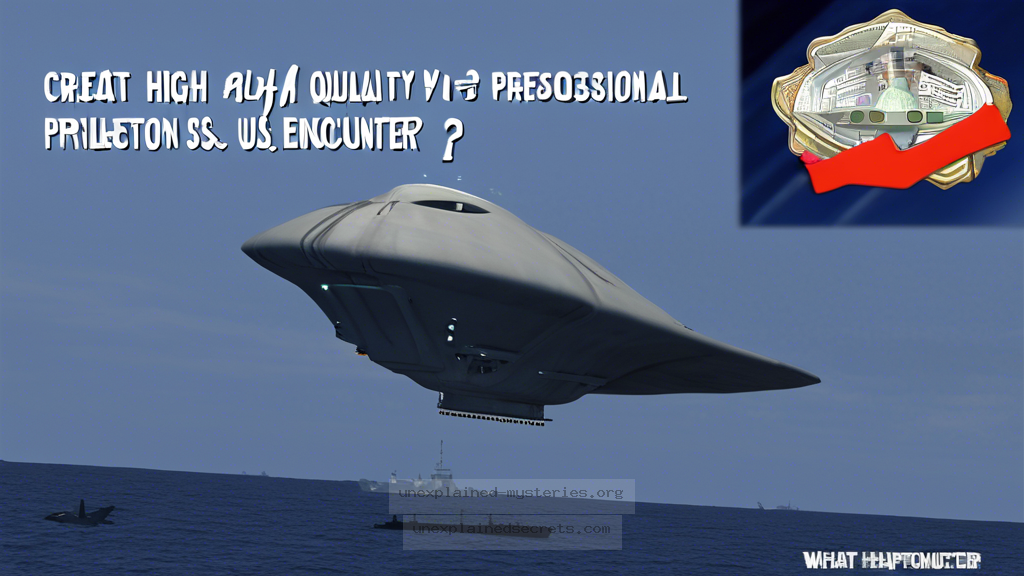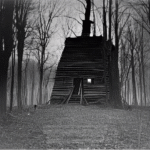What Happened During the 2004 USS Princeton UFO Encounter?
What Happened During the 2004 USS Princeton UFO Encounter?
The 2004 USS Princeton UFO encounter is one of the most compelling cases in the history of U.S. Navy operations, with implications that stretch beyond military concerns to the realms of extraterrestrial encounters and government secrecy. This incident, which occurred during the Nimitz Carrier Strike Group’s training exercises off the coast of San Diego, California, raises questions about what we know about unidentified aerial phenomena (UAP) and the possibility of advanced technologies beyond our comprehension. In this blog post, we will delve into the details of this incident, analyze its implications, and explore what it tells us about our understanding of UFOs and potential alien encounters.
Historical Context: The Rise of UAP Awareness
The USS Princeton incident took place in November 2004, a time when military interest in UAP was beginning to emerge. The U.S. Department of Defense had not yet publicly acknowledged the existence of UAP, but the incidents surrounding the Nimitz Carrier Strike Group catalyzed a shift in the perception of UFOs from fringe conspiracy theories to serious topics of investigation. This incident is part of a broader narrative that includes the release of classified videos by the Pentagon and the establishment of the Unidentified Aerial Phenomena Task Force (UAPTF).
Events leading to the USS Princeton’s encounter were marked by numerous reports of unusual aerial sightings during training exercises. The Nimitz Carrier Strike Group, which included the USS Nimitz, USS Princeton, and USS Vinson, was engaged in routine military drills when the sightings began. These reports included objects exhibiting flight characteristics that were beyond the capabilities of known aircraft, spurring interest and concern among military personnel. The Princeton, equipped with advanced radar systems, became a focal point for these encounters.
The Encounter: What Happened on the USS Princeton?
On November 14, 2004, while the Nimitz Carrier Strike Group conducted exercises, the USS Princeton began detecting anomalous radar signals. According to reports from the crew, the radar was tracking multiple unidentified objects that appeared to be hovering at high altitudes and performing maneuvers inconsistent with any known aircraft. The radar operators initially dismissed the signals as potential interference but soon realized they were tracking physical objects.
The radar systems on the Princeton, which included the AN/SPY-1 radar, were designed for detecting aircraft and missile threats. However, the objects exhibited speeds and acceleration that were far beyond any known military or civilian capabilities. The Princeton’s crew attempted to engage the unidentified objects, but they seemed to evade detection and response efforts, further complicating the situation.
Evidence and Documentation: Unpacking the Data
The USS Princeton incident has been backed up by various forms of documentation, including radar logs and testimonies from crew members. Radar data collected during the encounter showed blips that did not correspond to any known aircraft. The U.S. Navy’s own assessments classified these incidents as UAP, leading to further investigations.
Notable Fact: The radar operators reported that the objects were capable of sudden changes in speed and direction, leading to speculation about advanced propulsion technologies.
Additionally, eyewitness accounts from Navy pilots who participated in the training exercises have come to light, providing a human element to the story. Pilots described seeing objects that moved in ways that defied the laws of physics as we understand them, further fueling speculation about extraterrestrial technology. The combination of radar data and pilot accounts creates a compelling narrative that cannot be easily dismissed.
Core Concepts: Understanding UAP and Their Implications
UAP are defined as any aerial phenomenon that cannot be immediately identified. The USS Princeton incident serves as a prime example of the complexities involved in UAP investigations. Factors such as atmospheric conditions, technological limitations, and cognitive biases of observers often complicate assessments of these phenomena.
Moreover, the incident raises critical questions about national security. If these objects are advanced technologies from foreign nations, the implications for military readiness are significant. Conversely, if they represent extraterrestrial technology, this could fundamentally alter humanity’s understanding of our place in the universe.
Alternative Perspectives: What Do Skeptics Say?
While many enthusiasts and researchers view the USS Princeton incident as evidence of extraterrestrial encounters, skeptics argue that there may be more mundane explanations. Some suggest that the radar anomalies could have been caused by weather phenomena, such as temperature inversions, or malfunctioning equipment. Others propose that the objects could have been classified military drones or experimental aircraft that were operating without proper notification to the USS Princeton.
Warning: When approaching UAP incidents, it is essential to consider both sides of the argument and avoid jumping to conclusions based solely on anecdotal evidence.
These counterarguments highlight the importance of rigorous investigation and scientific inquiry. While skepticism is healthy, it should not deter open-minded exploration of the facts surrounding such incidents.
Common Misconceptions: Clarifying UAP Narratives
One of the most prevalent misconceptions about UAP is that they are synonymous with extraterrestrial spacecraft. While many believe this to be the case, the term UAP encompasses a broad range of phenomena, including atmospheric anomalies and advanced human-made technologies. It is crucial to differentiate between speculation about alien life and the need for concrete evidence.
Another common misunderstanding is the idea that the government is hiding a vast trove of knowledge about UAP. While there have been instances of classified information regarding UAP, recent government disclosures indicate a willingness to investigate and share findings with the public. This shift in transparency is a critical development in the ongoing discourse about UAP and their implications.
Best Practices for UAP Investigation and Study
For those interested in investigating UAP, several best practices can enhance the quality of research and findings. First, establishing a clear methodology is vital. This could involve collecting eyewitness testimonies, analyzing radar data, or utilizing scientific instruments to gather empirical evidence.
- Documentation: Always document sightings and gather as much data as possible.
- Collaboration: Work with experts in various fields, including aviation, meteorology, and physics.
- Transparency: Share findings with the wider community to foster collaborative research.
Insight: Engaging with the scientific community can provide valuable perspectives and methodologies for investigating UAP.
Future Developments: Ongoing Research and Government Initiatives
The USS Princeton incident is just one example of the growing acknowledgment of UAP within the military and governmental sectors. The establishment of the UAP Task Force in 2020 marked a significant change in how the government approaches these phenomena. The task force aims to standardize data collection and analysis regarding UAP sightings, ultimately leading to a more informed understanding of these occurrences.
Ongoing research efforts include collaboration with private companies and international partners to enhance capabilities in detecting and analyzing UAP. As technology advances, the potential for uncovering new evidence about UAP increases, paving the way for more comprehensive studies in the future.
Conclusion: The Legacy of the USS Princeton Incident
The USS Princeton UFO encounter remains a pivotal moment in the study of unidentified aerial phenomena. It embodies the intersection of military operations, advanced technology, and the enduring question of extraterrestrial life. By analyzing this incident, we gain insights into the complexities of UAP and the impact they may have on national security, scientific inquiry, and our understanding of the universe.
As we continue to explore these mysteries, it is essential to approach them with a balanced perspective, recognizing the importance of evidence-based research while remaining open to the extraordinary possibilities that may lie ahead. The journey into the unknown has just begun, and the USS Princeton encounter will undoubtedly remain a significant chapter in the ongoing narrative of UFOs and alien encounters.
Other Articles
Recent Posts
- What Happened to Flight MH370? The Conspiracy Theories That Still Haunt Us
- What Secrets Lurk Within the Walls of the Infamous Trans-Allegheny Lunatic Asylum?
- What Evidence Supports the Existence of Bigfoot in the Pacific Northwest?
- What Happened to the Indus Valley Civilization? Unraveling the Mysteries of Ancient Urban Life
- Can Telepathy Be Scientifically Proven Through Laboratory Evidence?







